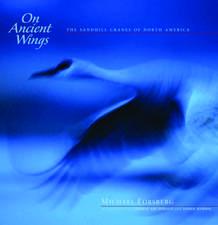Chemical Signals: Vertebrates and Aquatic Invertebrates
Editat de D. Muller-Schwarzeen Limba Engleză Paperback – 13 feb 2012
Preț: 396.98 lei
Nou
Puncte Express: 595
Preț estimativ în valută:
75.100€ • 78.100$ • 63.01£
75.100€ • 78.100$ • 63.01£
Carte tipărită la comandă
Livrare economică 07-21 februarie 25
Preluare comenzi: 021 569.72.76
Specificații
ISBN-13: 9781468410297
ISBN-10: 1468410296
Pagini: 456
Ilustrații: X, 446 p.
Dimensiuni: 178 x 254 x 24 mm
Greutate: 0.79 kg
Ediția:Softcover reprint of the original 1st ed. 1980
Editura: Springer Us
Colecția Springer
Locul publicării:New York, NY, United States
ISBN-10: 1468410296
Pagini: 456
Ilustrații: X, 446 p.
Dimensiuni: 178 x 254 x 24 mm
Greutate: 0.79 kg
Ediția:Softcover reprint of the original 1st ed. 1980
Editura: Springer Us
Colecția Springer
Locul publicării:New York, NY, United States
Public țintă
ResearchCuprins
One: Field Studies.- Some Responses of a Free Living Community of Rodents to the Odors of Predators.- The Urine Marking Behavior and Movement Patterns of Red Foxes (Vulpes vulpes) During a Breeding and Post- Breeding Period.- Marking Behavior in Wild Red Foxes in Response to Synthetic Volatile Urinary Compounds.- Chemical Signals in Alarm Behavior of Deer.- Territorial Marking Behavior by the South American Vicuna.- Induction of Settling and Metamorphosis of Planktonic Molluscan (Haliotis) Larvae. III: Signaling by Metabolites of Intact Algae is Dependent on Contact.- Two: Reproductive Behavior.- Relationships Between Aggression, Scent Marking and Gonadal State in a Primate, the Tamarin Saguinus fuscicollis.- Olfactory Aspects of Rutting Behavior in the Bactrian Camel (Camelus bactrianus ferus).- Three: Food Responses.- Chemosensory Searching by Rattlesnakes During Predatory Episodes.- What the Nose Learns from the Mouth.- Rat Pup’s Food Consumption as a Function of Preweaning Tastes and Odors.- Four: Learning.- Experience Affects Behavioral Responses to Sex Odors.- Development of Olfactory Attraction by Young Norway Rats.- Odor Aversion Learning by Neonatal Rats: Ontogeny of Osmic Memory.- Five: Priming.- The Influence of Pheromones on Puberty in Rodents.- The Modulation of Reproduction by Priming Pheromones in House Mice: Speculations on Adaptive Function.- The Major Histocompatibility Complex as a Source of Odors Imparting Individuality Among Mice.- Six: Vomeronasal Organ.- Behavioral and Stimulus Correlates of Vomeronasal Functioning in Reptiles: Feeding, Grouping, Sex, and Tongue Use.- The Vomeronasal Organ and Accessory Olfactory System in the Hamster.- Chemical Communication in the Guinea Pig: Urinary Components of Low Volatility and Their Access to theVomeronasal Organ.- The Role of the Vomeronasal System in Mammalian Reproductive Physiology.- Seven: Chemistry.- Chemical Studies of Hamster Reproductive Pheromones.- Chemical Studies of the Primer Mouse Pheromones.- Variation in the Levels of Some Components of the Volatile Fraction of Urine from Captive Red Foxes (Vulpes vulpes) and its Relationships to the State of the Animal.- Eight: Abstracts.- Chemical Signals Associated with Aquatic Prédation Sites.- The Role of Chemoreception in Some Social and Synchronous Behavior of the Crayfish, Procambarus clarkii.- Behavioural and Electrophysiological Effects of Natural Chemical Stimuli in the Goldfish (Carassius auratus).- Olfactory Use in Food-Location at Sea by Tubenosed Pelagic Birds.- Partial Isolation of Pregnancy Block Pheromone in Mice.- The Role of the Tarsal Glands in the Olfactory Communication of the Ontario Moose.- Diosmic Responses to Scent-Signals in Lemur catta.- Studies on Chemical Communication in Some African Bovids.- Author Index.







